Tomatoes are the crown jewel of the vegetable garden—bright, juicy, and packed with flavor. Whether you’re growing beefsteak varieties for sandwiches or cherry tomatoes for snacking, planting them at the right distance is key to maximizing your harvest. While tomatoes may seem low-maintenance, the spacing between plants plays a critical role in determining their productivity, disease resistance, and overall health.
In this detailed guide, we’ll explore the ideal tomato plant spacing for different varieties and settings, and explain why proper spacing is vital for growing bigger, healthier crops.
Why Tomato Plant Spacing Matters
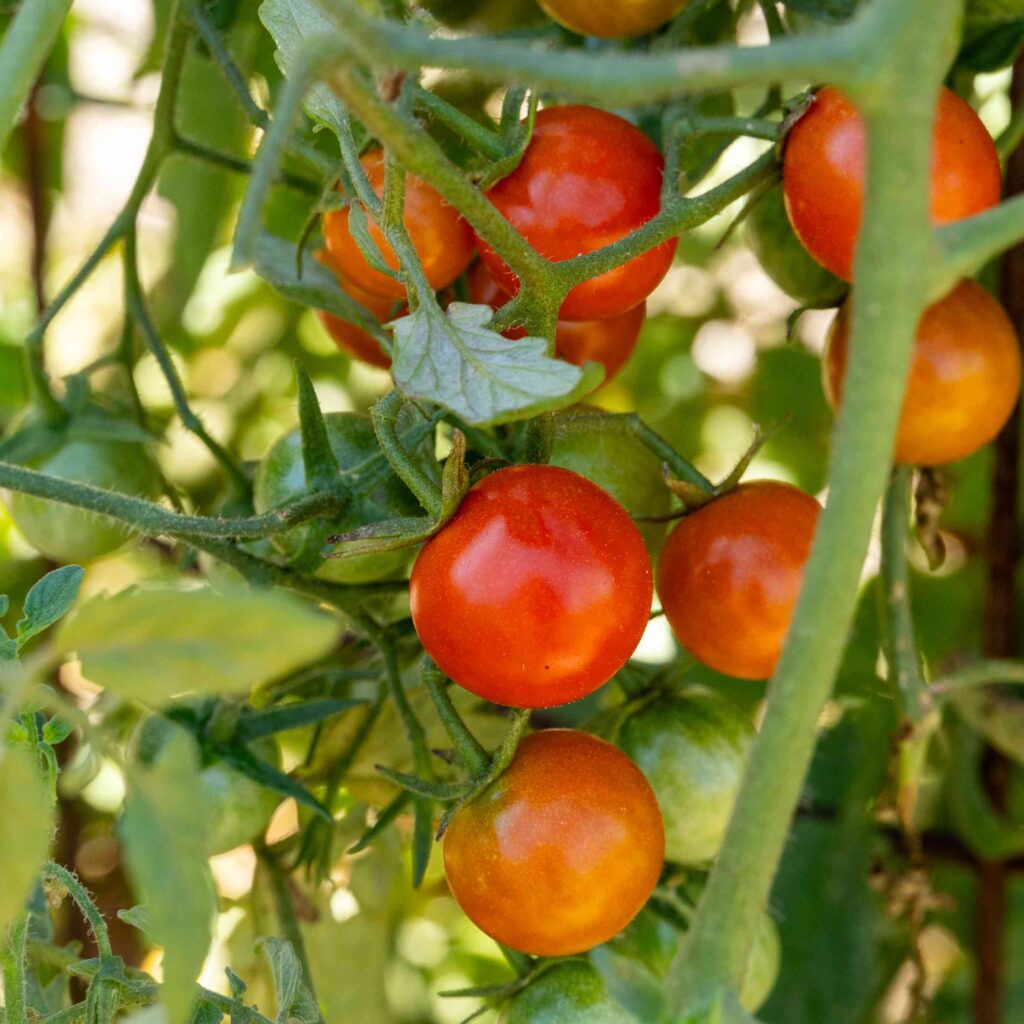
Before digging into numbers, it’s important to understand why spacing matters so much in tomato cultivation. Proper spacing:
- Prevents diseases like blight by allowing better air circulation.
- Reduces competition for sunlight, water, and nutrients.
- Supports better fruit development and ripening.
- Makes harvesting easier by allowing access between plants.
- Improves pollination through better plant exposure.
In short, spacing is not just about organization—it’s about giving each tomato plant the conditions it needs to thrive and produce abundantly.
Key Factors Influencing Tomato Plant Spacing
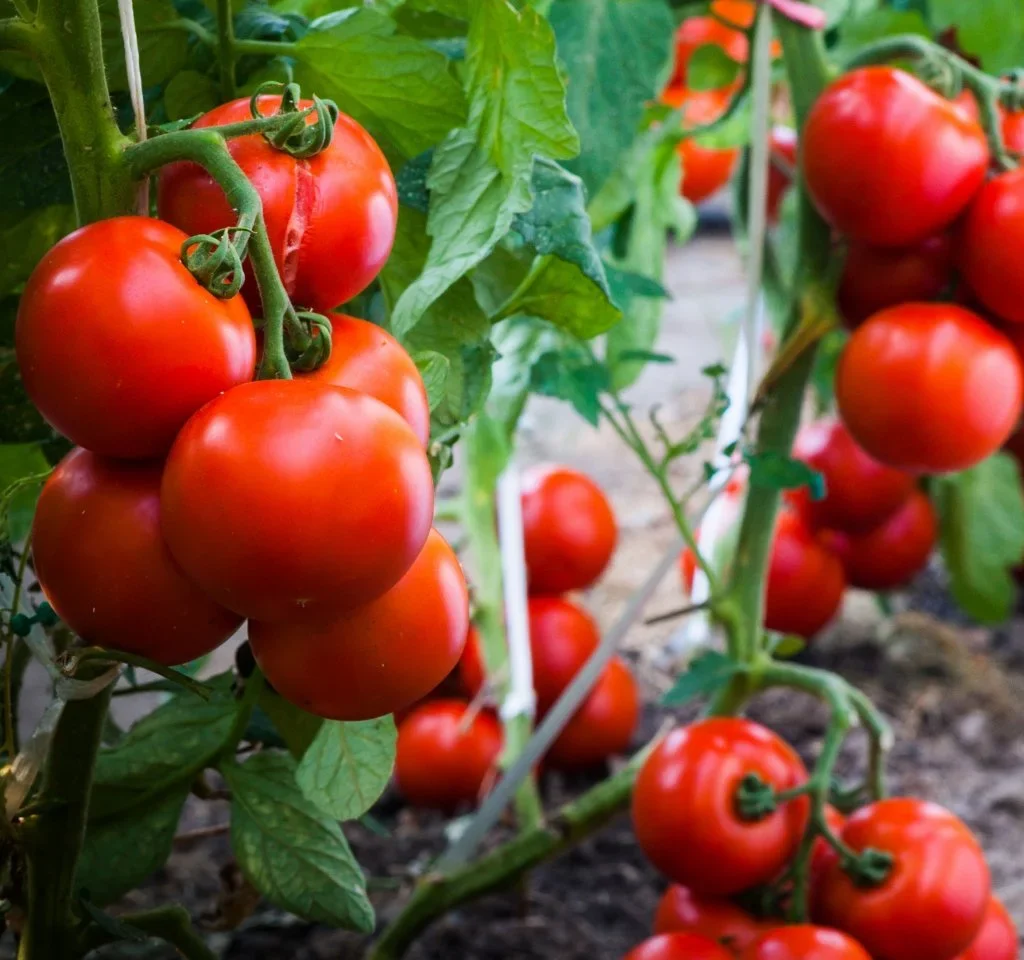
Not all tomatoes are the same. Some grow tall and sprawling, while others stay compact. The spacing you choose depends on several factors:
1. Growth Habit
Tomatoes are categorized into two main types:
- Determinate (bushy, fixed height): These varieties stop growing once flowers form at the top. Common in container and patio gardening.
- Indeterminate (vining, continuous growth): These tomatoes keep growing and producing until frost. They require more space and support.
2. Support System
Tomatoes can be:
- Staked or caged (vertical growth, closer spacing)
- Unstaked or sprawling (need more space due to horizontal growth)
3. Planting Method
- In-ground gardens offer more flexibility for wider spacing.
- Raised beds and containers usually require closer spacing due to limited area.
- Greenhouses often use vertical trellising and precise spacing.
General Tomato Spacing Guidelines
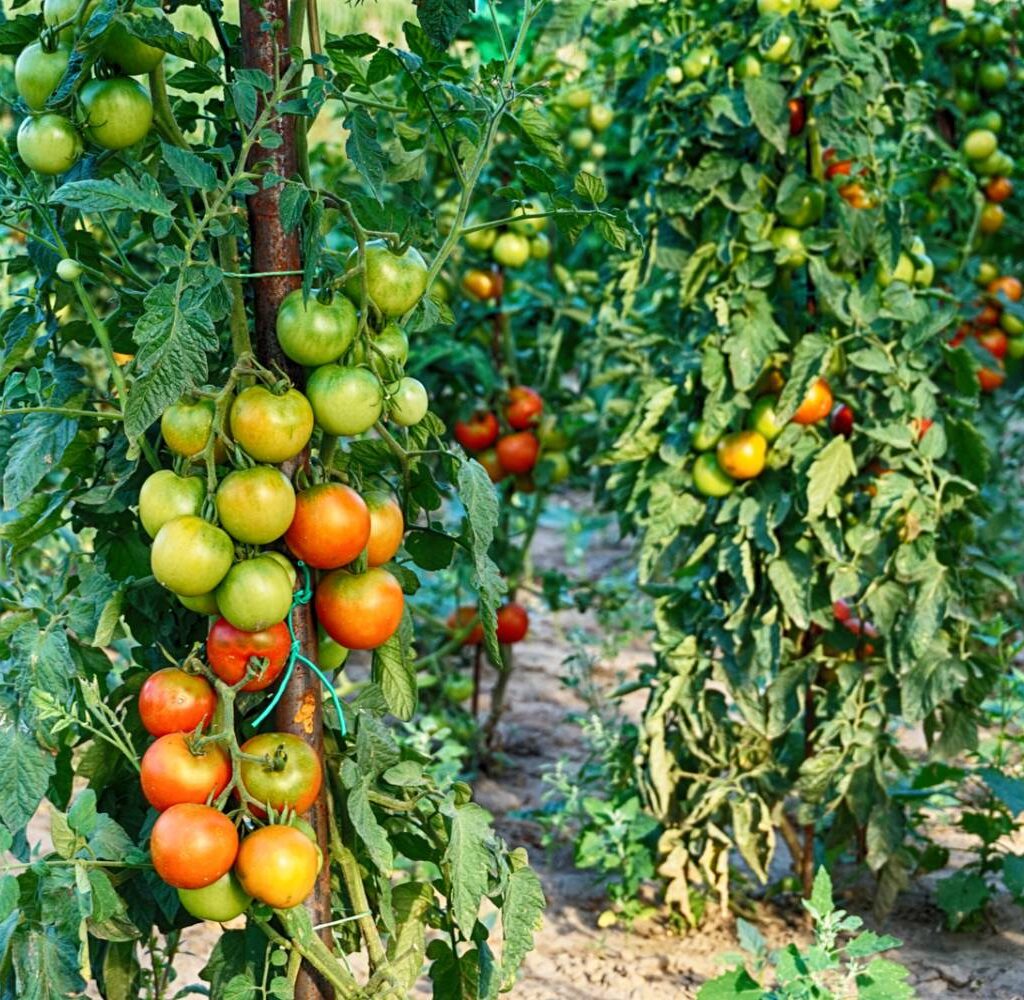
Here’s a quick overview of recommended spacing based on plant type and method:
| Tomato Type | Spacing Between Plants | Spacing Between Rows |
|---|---|---|
| Determinate (staked) | 18–24 inches | 36–48 inches |
| Determinate (unstaked) | 24–30 inches | 36–48 inches |
| Indeterminate (staked) | 24–30 inches | 36–60 inches |
| Indeterminate (caged/trellised) | 30–36 inches | 36–60 inches |
| Indeterminate (sprawling) | 36–48 inches | 48–60 inches |
Detailed Spacing Recommendations by Type
1. Determinate Tomatoes (Bush Varieties)
Spacing: 18–24 inches apart
Row spacing: 36–48 inches
Determinate tomatoes, such as ‘Roma’ or ‘Bush Early Girl’, are compact and perfect for smaller gardens or containers. Since they grow to a fixed height, they don’t need as much space between plants.
- In containers: Use one plant per 5-gallon bucket or pot.
- Benefits: Easy to maintain, harvest all at once.
Tip: Overcrowding determinate tomatoes reduces airflow and increases the risk of fungal diseases.
2. Indeterminate Tomatoes (Vining Varieties)
Spacing: 24–36 inches apart
Row spacing: 36–60 inches
Indeterminate tomatoes like ‘Brandywine’, ‘Sungold’, or ‘Big Boy’ keep growing all season long. They need more space to allow for upward growth and easy pruning.
- Use cages or tall stakes to train vines vertically.
- Prune lower leaves to maintain airflow.
- Plant deeply for a stronger root system.
Tip: Allowing 30 inches between plants gives room for support structures and easier maintenance.
3. Sprawling Tomatoes (Unstaked or Low Support)
Spacing: 36–48 inches apart
Row spacing: 48–60 inches
If you let your tomatoes sprawl on the ground or with minimal support, give them generous room. These plants take up horizontal space and are more vulnerable to soil-borne diseases.
Tip: Lay down straw mulch to reduce contact with soil and suppress weeds.
Greenhouse and Raised Bed Considerations
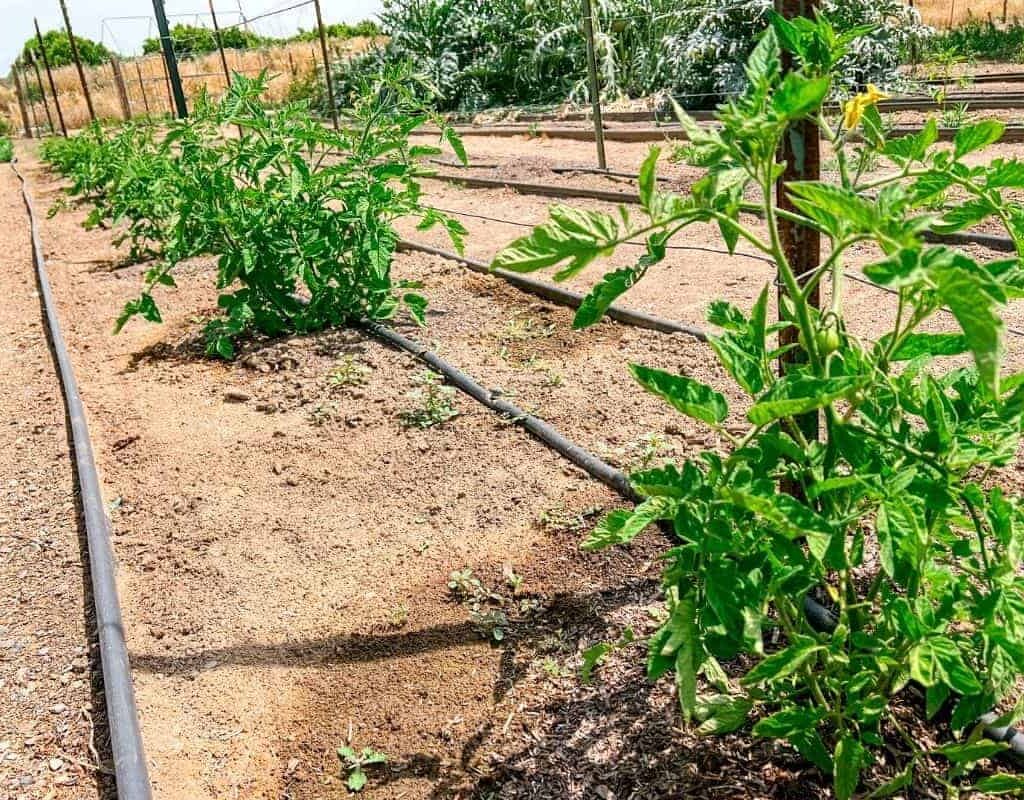
In greenhouses or intensive gardening systems like raised beds, spacing can be adjusted slightly, but must still allow airflow and sunlight.
Greenhouse Tomatoes
- Spacing: 18–24 inches in double rows
- Trellis vertically to the ceiling
- Remove suckers and lower leaves for better airflow
Raised Bed Tomatoes
- Spacing: 18–24 inches (if staked) or 24–30 inches (if caged)
- Rows: Use zigzag patterns to maximize space
- Ensure rich, well-draining soil and regular feeding
Tip: In small spaces, always grow indeterminate varieties vertically to maximize yield per square foot.
Consequences of Poor Spacing
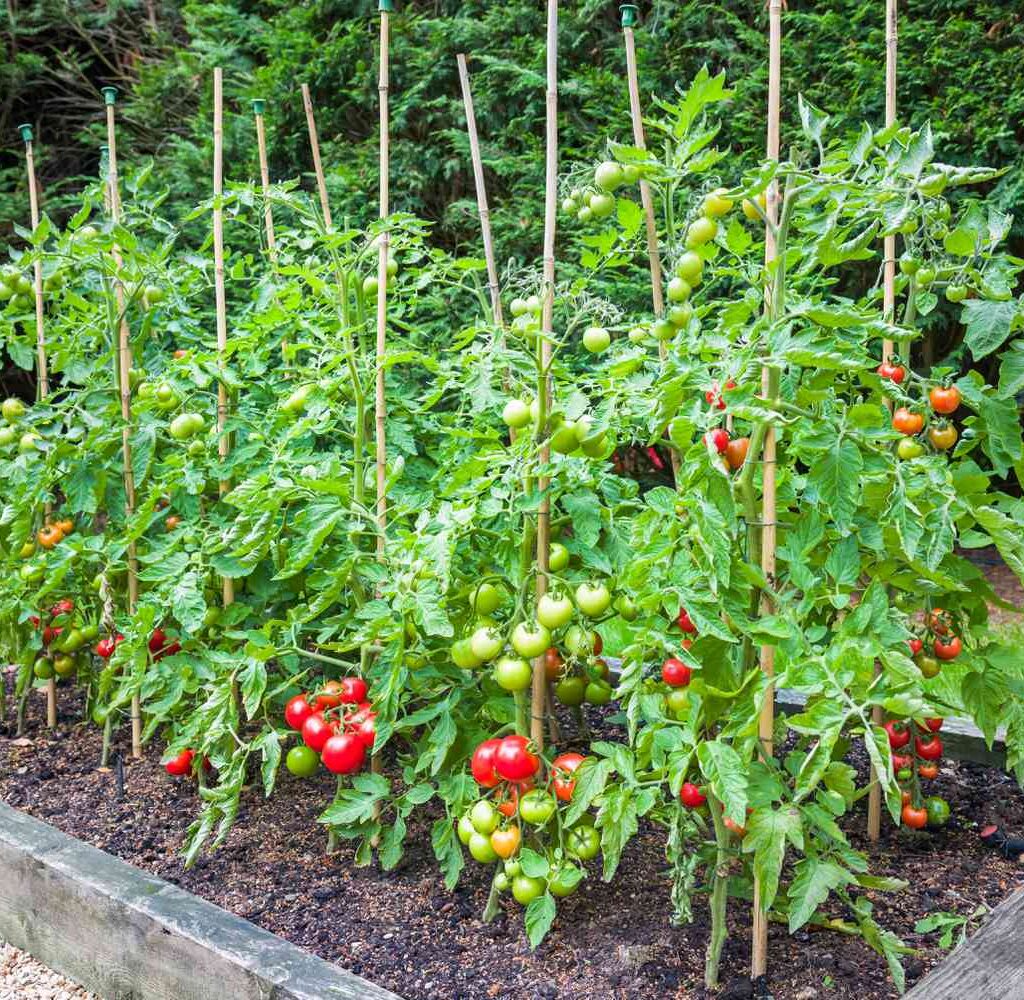
If tomatoes are planted too close together, expect the following issues:
- Reduced air circulation, leading to powdery mildew or early blight
- Stunted growth due to root competition
- Poor fruit development and less sunlight reaching inner branches
- Increased pest presence like aphids and whiteflies
Proper spacing prevents these problems and ensures each plant produces more fruit with better flavor and fewer diseases.
Bonus Tips for Maximum Tomato Yield
1. Use Companion Planting
Plant basil, marigold, or garlic near tomatoes to deter pests and boost growth.
2. Water at the Base
Avoid wetting foliage; water deeply and regularly to encourage deep root growth.
3. Provide Full Sun
Tomatoes need 6–8 hours of direct sunlight daily for optimal production.
4. Fertilize Regularly
Use balanced fertilizer early in the season, and switch to low-nitrogen fertilizer once fruiting starts.
5. Prune Wisely
Remove suckers and lower leaves to improve airflow and reduce disease risk.
Sample Tomato Planting Layout (for Home Garden)
If you’re planting in a 10 ft x 10 ft garden bed using caged indeterminate tomatoes:
- Rows: 2
- Plants per row: 3–4
- Spacing: 30 inches between plants, 4 feet between rows
That gives you room for 6–8 productive plants with enough air and sunlight for a heavy crop.
Conclusion
Proper spacing is one of the most important decisions you’ll make when growing tomatoes. Whether you’re using a raised bed, greenhouse, or in-ground plot, how far apart you plant your tomatoes will directly affect your harvest quantity, plant health, and fruit quality.
To summarize:
- Determinate tomatoes: 18–24 inches apart
- Indeterminate (staked): 24–30 inches apart
- Indeterminate (caged or sprawling): 30–48 inches apart
- Always ensure good airflow, sun exposure, and support
By respecting spacing guidelines and giving your plants room to grow, you’re setting yourself up for a bountiful and juicy tomato harvest that will keep your kitchen stocked all season long.

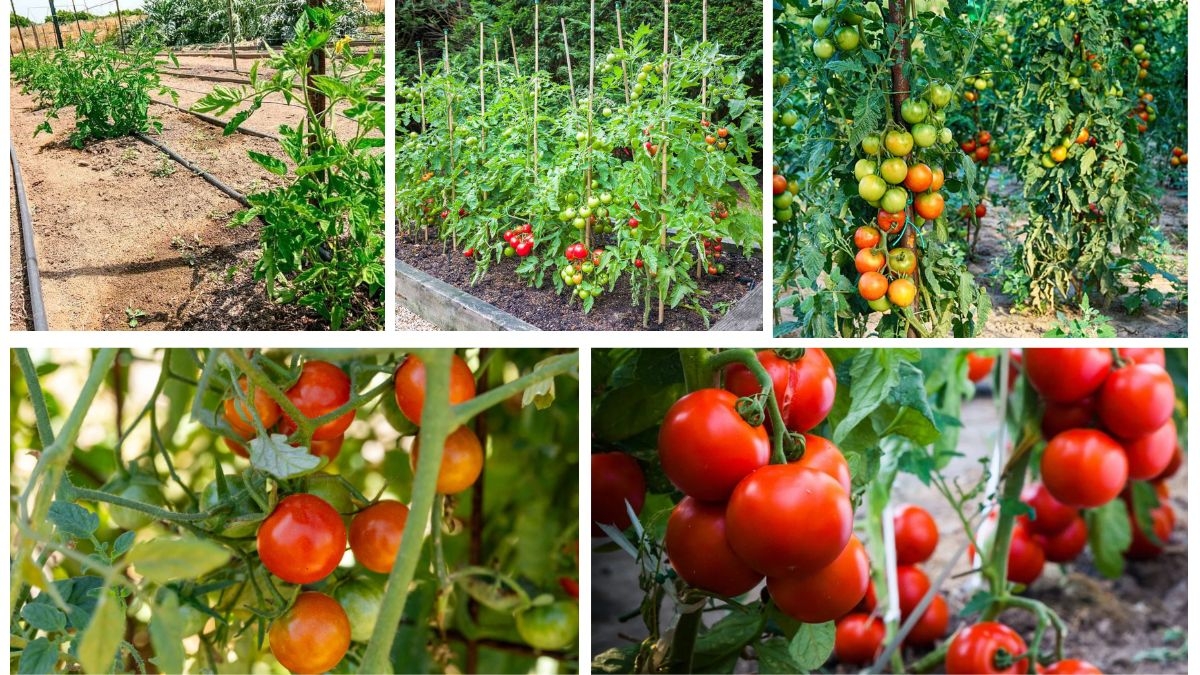



Leave A Comment